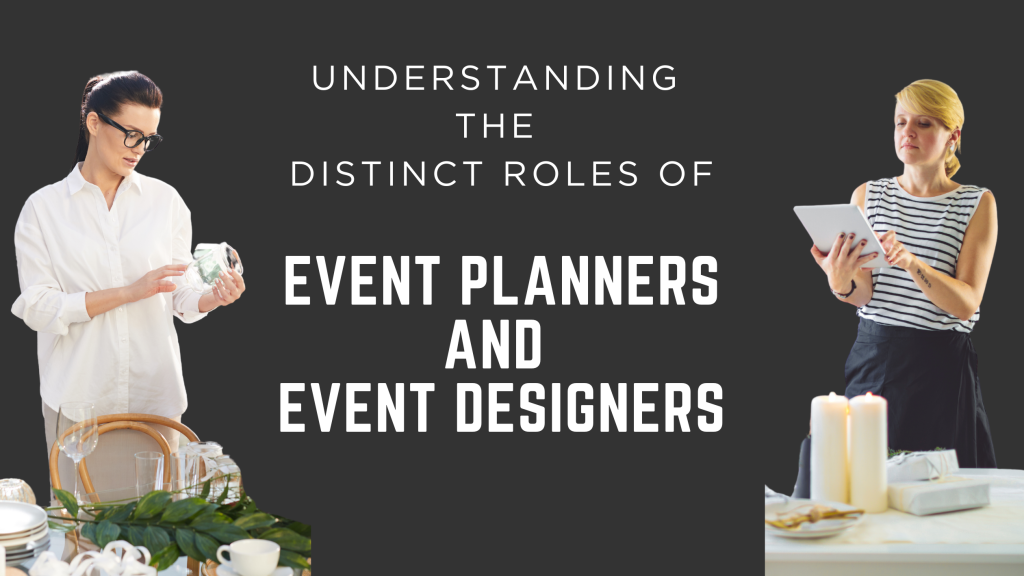Understanding the Distinct Roles of Event Planners and Event Designers

Understanding the Distinct Roles of Event Planners and Event Designers
In the world of events, where every detail is curated to leave a lasting impression, success lies not just in meticulous logistics, but in the symphony of experiences that unfold, from arrival to farewell.
As with any industry, the event world will have moments where everyone attempts to do more with less (DIY weddings coinciding with the Great Recession were not a coincidence). As such, the line between event planning and designing can get a bit blurry, with many event planners taking on event design responsibilities, and many event designers taking on planning duties. But understanding the distinction between an Event Planner and an Event Designer is not only helpful for clients, but useful for professionals aiming to master their craft, and clearly define partnerships with collaborators.
These roles are complementary, but fundamentally different, each crucial to transforming a vision into a flawlessly executed, unforgettable experience.
Event Planner: The Strategist Behind the Curtain
An Event Planner is the logistical architect. Their expertise lies in timelines, budgets, vendor negotiations, permits, and risk management. Planners thrive on precision and structure, serving as the operational backbone from start to finish.
They handle:
- Venue scouting and booking
- Budget creation and oversight
- Vendor coordination and contracts
- Run-of-show development
- Contingency planning and problem-solving
More than just task managers, great planners are guardians of peace of mind. They anticipate issues before they arise and keep the entire event ecosystem in harmony, ensuring that every detail runs smoothly and efficiently.
Though their work often goes unseen, it is deeply felt in the seamlessness of a successful event.
Event Designer: The Storyteller Through Space
If the planner is the architect, the Event Designer is the artist. Designers are creative visionaries who turn themes, brands, or emotions into immersive environments using texture, color, light, and layout.
They shape:
- Visual concepts and mood boards
- Color palettes and floral design
- Tablescapes, signage, and lounge layouts
- Lighting, installations, and ambiance
- The emotional tone of the guest experience
Designers know events are inherently multi-sensory. A truly memorable event isn’t just seen, it’s felt. Guests may not consciously register the scent of blooming gardenias or the softness of velvet draping, but these sensory moments heighten their emotional response and connection.
Great designers don’t just make things beautiful, they make them meaningful.
Collaboration in Creating a Multi-Sensory Experience
Today’s most compelling events are fully immersive. They invite guests into curated experiences that engage sight, sound, scent, taste, and touch. The real magic happens when planners and designers collaborate intentionally to shape these moments.
Consider a high-end wedding:
- The planner manages RSVP tracking, seating logistics, and vendor communication.
- The designer tells the couple’s story through floral installations, lighting, and personal design touches.
- Together, they ensure the timeline supports the reveal of each design moment and that every guest touchpoint, from escort cards to after-party lighting, feels seamless.
Or a corporate brand launch:
- The planner secures permits, coordinates production schedules, and keeps everything on track.
- The designer builds a space that speaks to innovation, infusing it with color theory, immersive tech, and branded sensory experiences.
- Together, they turn an empty venue into a transformational brand story.
When both professionals are aligned, an event becomes a work of art that runs like clockwork.
Why the Distinction Matters
As events become more immersive, with more details to track, the need for clearly defined roles has never been more important.
Clients often expect one person to handle it all, but planning and designing require different skill sets. While some professionals may straddle both worlds, excellence often comes from specialized collaboration.
A great planner will:
- Keep creative ideas grounded in budget and feasibility.
- Manage timelines to support key design reveals.
- Ensure vendors are aligned with the overall experience.
A great designer will:
- Elevate brand or event narratives through cohesive visual storytelling.
- Enhance emotional impact through lighting, layout, and sensory detail.
- Create unforgettable moments that feel effortless to the guest.
Together, they transform the ordinary into the exceptional.
Final Thoughts
At its best, an event is more than a gathering of people, it’s a narrative brought to life through sound, sight, sensation, and scent.
The Event Planner and the Event Designer are interdependent. When both roles are honored and well-executed, the result is not just an event, it’s a memory, a moment, a masterpiece.
Looking to elevate your event team?
Make sure your planner and designer are both at the table from day one, and watch your vision come to life with intention, elegance, and impact.


